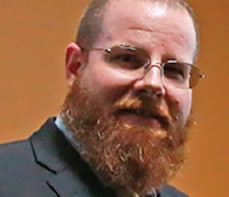EDUCATION
University of Michigan, MS Industrial and Operations Engineering (NIOSH Trainee – Occupational Safety Engineering and Ergonomics Program), 2011
Central Georgia Technical College, AAS Metrology, 2008
University of West Georgia, BS Physics, 2006
CAREER SUMMARY
In my current role, I serve as the Senior Safety Engineer for the Mechanical Engineering Division at Southwest Research Institute (SwRI). I work with Division Management to develop and implement the Division’s Safety and Health Objectives and Programs to achieve “”Goal Zero.”” I have expertise in building, managing, and auditing occupational health and safety management systems, applying occupational safety engineering, ergonomics/human factors, and industrial engineering principles to solve complex health and safety issues.
Prior to joining SwRI, I had the privilege of administering occupational safety programs across a variety of different industries, including healthcare (University of Michigan Health System), automotive (Toyota – North America), and aerospace (Lockheed Martin Commercial Engine Solutions).
In these previous roles, I gained invaluable experience and skills: Lead and Internal Auditor of the Safety Management System for an entire Manufacturing Plant; Trainer and presenter for both general and specialized Safety and Health training courses (e.g., Lockout/Tagout, Bloodborne Pathogens, Ergonomics, Machine Guarding, Safety Management Systems, and Equipment Commissioning Process, etc.); managed Industrial Hygiene Monitoring for large-scale projects (e.g., excessive noise, chemical sampling, etc.); performed risk assessments, incident investigations, root cause analysis, as well as developed recommendations for corrective/preventative actions; created emergency action plans and conducted emergency drills.
How does your Master’s degree differentiate you from others?
The University of Michigan Center for Occupational Health and Safety Engineering (COHSE) is only one of eighteen Education and Research Centers (ERC) across the United States that is supported by the U.S. National Institute for Occupational Safety and Health (NIOSH). Being an alumnus of the University of Michigan has allowed me to greatly differentiate and distinguish myself from my peers in this field. As a NIOSH Trainee in the COHSE’s Occupational Safety Engineering and Ergonomics (OSE) Academic Program, I had the opportunity to engage in a multi-disciplinary educational experience by taking classes in the College of Engineering as well as the School of Public Health. The OSE Program provided me with the necessary education, skills, and insights needed to successfully transition from the classroom and into a rewarding career as a Safety Professional.
Reflection on Time Spent at U-M
Professional Organizations
While I attended UM, I was involved in the Human Factors and Ergonomics Society (HFES) and the Institute of Industrial and Systems Engineers (IISE). After graduating from UM, I joined the American Society of Safety Professionals (ASSP). ASSP is a global association for occupational safety and health professionals (39,000+). They provide education, advocacy, standards development, scholarships/grants, and a professional community to their members in order to advance their careers and the OSH profession as a whole. This organization has been a tremendous resource in my personal and professional development. I strongly recommend joining as a student and volunteering for a leadership position in your local Chapter (i.e., the Greater Detroit Chapter).
Professional Licenses, Certifications, and Designations to aspire to obtain:
– Licensed Professional Engineer (PE) – Board of Professional Engineers (per State in US)
– Certified Safety Professional (CSP) – Board of Certified Safety Professionals
– Certified Professional Ergonomist (CPE) – Board of Certification in Professional Ergonomics
– Certified Industrial Hygienist (CIH) – American Board of Industrial Hygiene
– Lean Green Belt / Black Belt – Institute of Industrial and Systems Engineers
– Hazardous Waste Operations Responder (HAZWOPER) – various providers
– OSHA 30-Hour General Industry and/or Construction – OSHA Training Centers
Some of my favorite and most influential classes include:
– Safety Engineering Methods
– Manufacturing Strategies
– Work Organizations
– Occupational Safety Management
– Measurement and Design of Work
– Occupational Biomechanics
– Theories of Administration
– Intro to Systems Engineering
– Cognitive Ergonomics
– Human Error and Systems Failure
– OHSE Program Management
– Seminar in Occupational Health and Safety
– Ergonomics Project/Thesis
